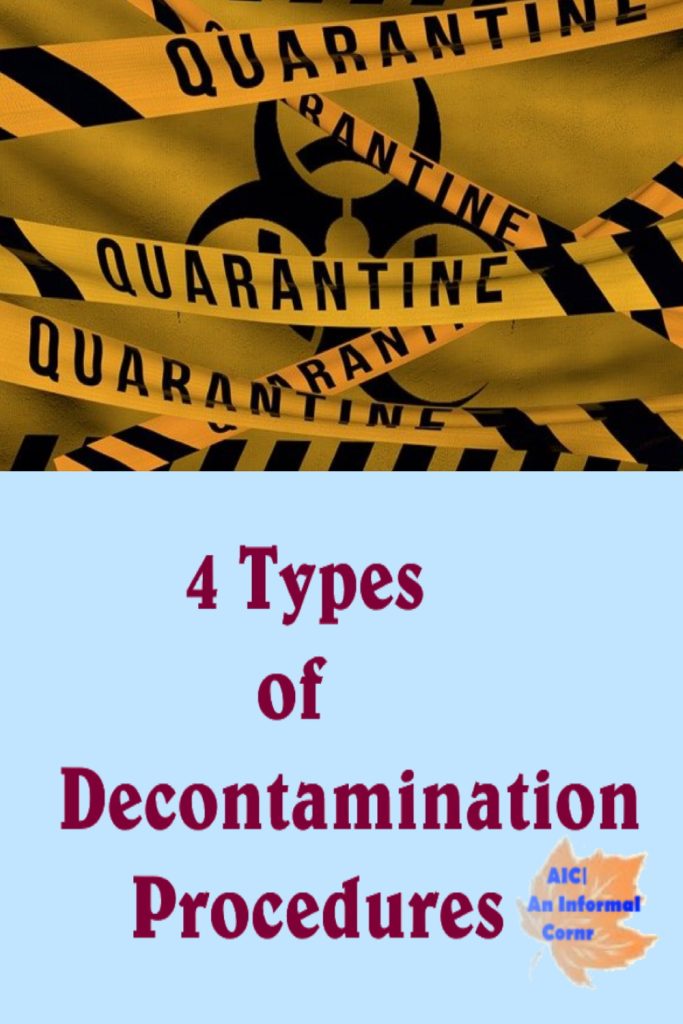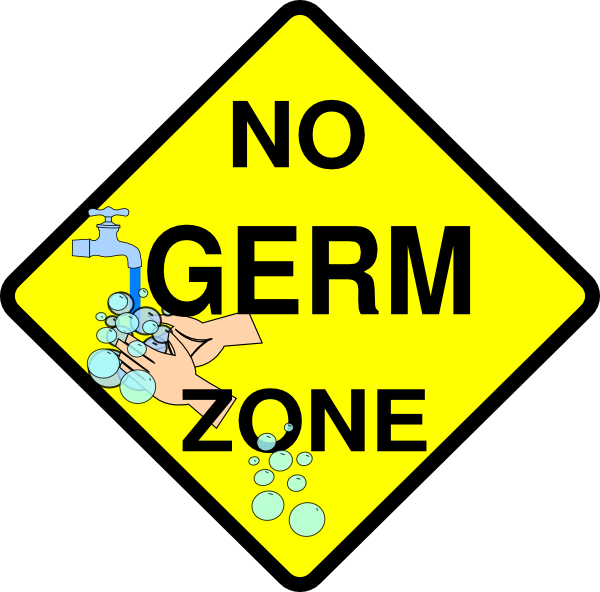
What is Decontamination?
The use of decontamination refers to applying a process or the treatment in ‘removing contaminants‘ from a person and/or object such as medical equipment or surrounding surfaces. This ensures safe handling, and prevention and/or exposure of cross-contamination, and/or transmission of contagions.
Today’s society has laws in place for many businesses to protect the Public from being exposed to the many types of microorganisms known as virus’s, and bacterial germs. This is to prevent outbreaks and maintain our health. This is known as ‘Public Health‘ services and their main goal is to ‘safeguard and improve the health of the community as a whole.‘ (Miller-Keane, Encyclopedia & DIctionary of Medicine, Nursing, & Allied Health)
Let’s go forward and read on about the ‘behind the scenes’ efforts that are taken by medical professionals and supporting staff to do their best to bring about our full recovery.
Different Decontamination Uses
Sterilization: using a physical or chemical procedure to destroy microbes including highly resistant bacterial endospores (Listeria, Staphylococcus, Streptococcus).
Disinfection : using a liquid chemical to destroy all pathogenic microorganisms with the exception of bacterial spores on work surfaces and equipment. Effectiveness will depend on ‘what‘ was on or near the surfaces and equipment.
Antisepsis: applying a liquid antimicrobial chemical aka a germicide to skin or living tissue to inhibit or destroy germs.
Cleaning: use of soap and water and scrubbing by (gloved) hand or brush. A first step before sterilization or disinfection of equipment to help reduce germs.

Methods of Decontamination
Heat Sterilization – Wet and Dry
Wet Heat : Using steam at various temperatures and specific periods of time, is used for sterilizing physical objects and equipment. It’s viewed as rapid and dependable against many organisms, and bio-hazard wastes for decontamination.
Dry Heat: a method that is less efficient, and needs longer periods of time with higher temperatures. It is safer to use on impermeable surfaces such as glass without worrying about germs being insulated.
Liquid Disinfection
Liquid disinfectants are used in different concentrations for decontaminating surfaces and liquid wastes. Various types of liquids are used for disinfecting, and only those confirmed to eliminate germs are used.
Effectiveness will depend on types of organisms, concentrations, time, and other environmental conditions. There is no one specific liquid disinfectant that’s effective with all germs and conditions.
Vapors and Gas
A method delivering excellent disinfection used in closed areas and controlled environment of temperature and humidity. Applied to areas with bulky and sensitive equipment, biosafety storage cabinets, rooms, buildings and associated air supply systems.
Radiation (ionizing and non-ionizing)
Ionizing
Ionizing radiation will destroy microorganisms, cause tissue damage, kill cells, and cause cancers.
Non-ionizing
Ultraviolet (UV) radiation (includes our Sun) effectively eliminates most germs in air, water and on surfaces. Germs must be directly exposed to the UV light. Poor results rise when dirt, dust, and shadows can hide germs.
UV radiation is used to reduce levels of airborne microorganisms and maintain good air. It’s important to note there are dangers to human health when exposed for long lengths of time, and unshielded, to UV light.
Learning to Add to our Self-care
Our last two years with Covid-19 has given us a glimpse into medical practices that have been learned and followed by all medical professionals, for decades. Masks help block airborne germs entering our nose and mouths, handwashing helps sanitize our hands that touched surfaces that may be contaminated with germs of one kind or another.
We have learned one step in our self-care to promote ‘decontamination‘ which helps prevent bringing it home to immunocompromised family members.

Germs are opportunistic and I guess, predatory. They look for an environment similar to ours, a source of warmth, water and supply of nutrients. Our own bodies deliver such an environment, and will do it’s best to defend us; a fever to ‘sterilize‘, runny nose, vomiting, and diarrhea to ‘expel‘ germs but we may still get overrun.
Our hospitals provide us with a secondary ‘protective‘ environment. They deliver care, a sterile environment, medicines to strengthen our own immunity and promote wellness, while simultaneously keeping our environment clean and healthy, for you, themselves, and others.
I truly hope you have a deeper understanding and higher view of our health professionals, and the care they take to ensure you have the best environment for a quick recovery.
Let’s celebrate the ability of us Humans to learn about health, and our environment. It’s not perfect but every new discovery gets added to providing better care, to our future generations.
Learning in Motion
Extra Reading Resources
Tips for Keeping COVID-19 Out of Your Home
Disinfectant Overkill: What are “Quats” and why are they a problem?
How-to Create and Practice an Emergency Exit Plan
How might climate change affect the spread of viruses?
I hope you found this article informative and gained some new insight. Please feel free to Share your comments, and share your new found knowledge with others. Use the ‘Ask A Question’ form to make a request on a topic of your own interest. It is FREE to subscribe to my RSS feed.
Article (C)2022 – current, AIC| An Informal Cornr, all rights reserved. Ginsense writes articles on business skills, development, health, science, technology and society and enjoys advocating for independence, security and a better world for all of us.
